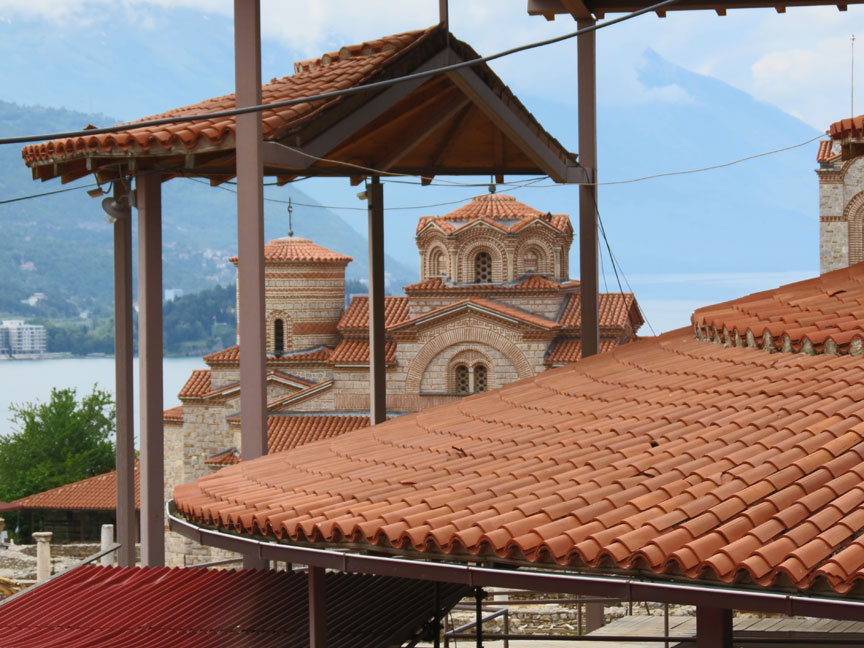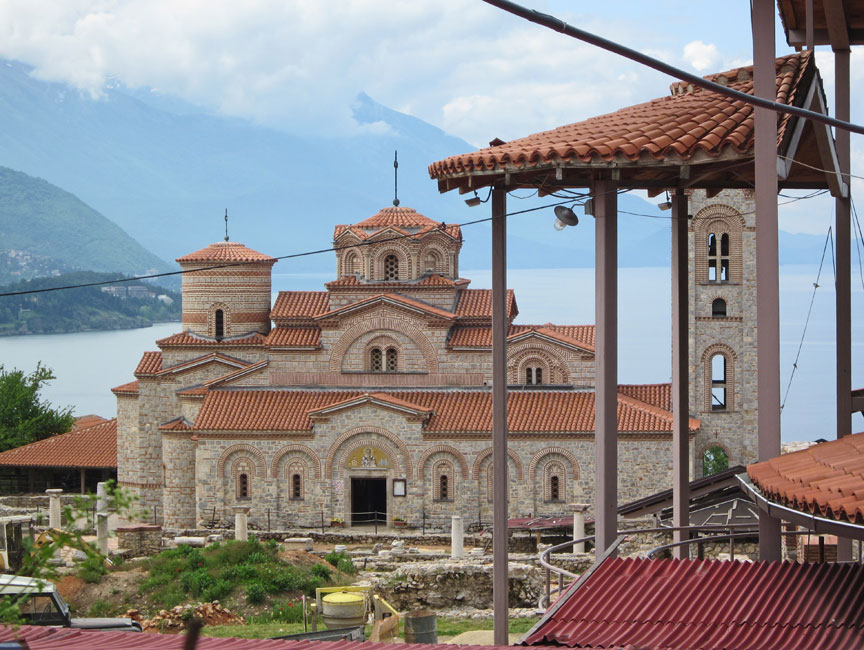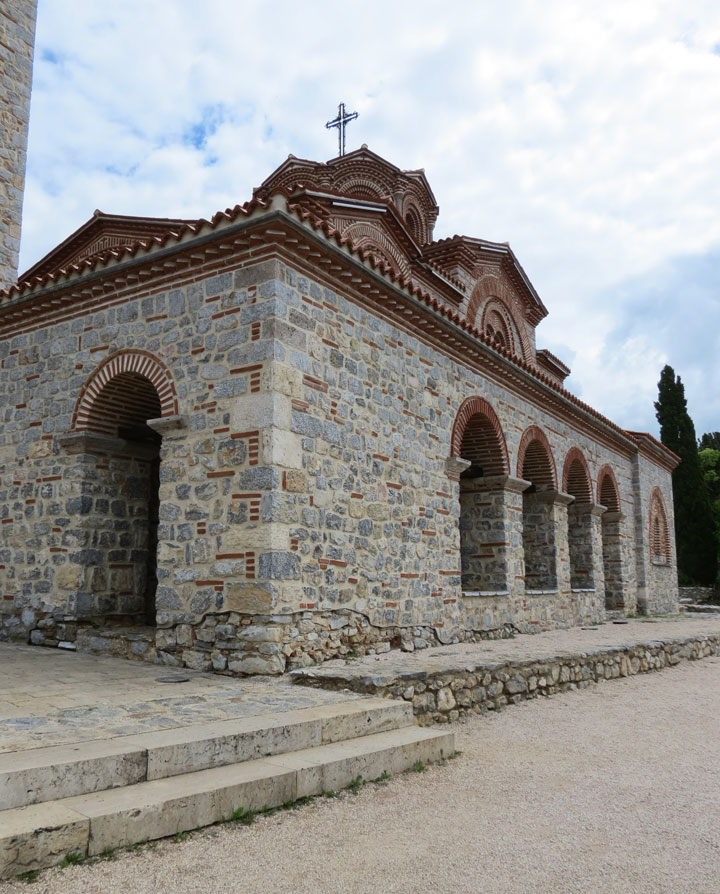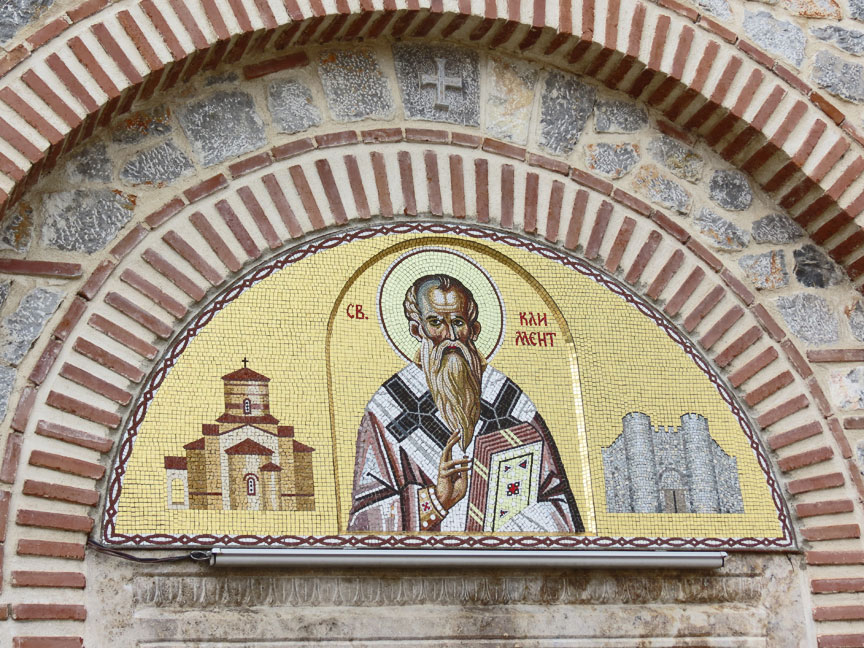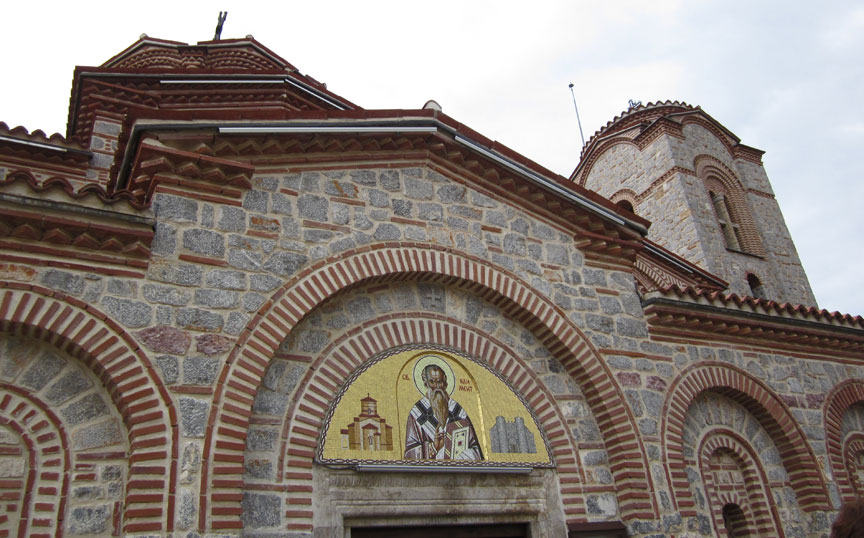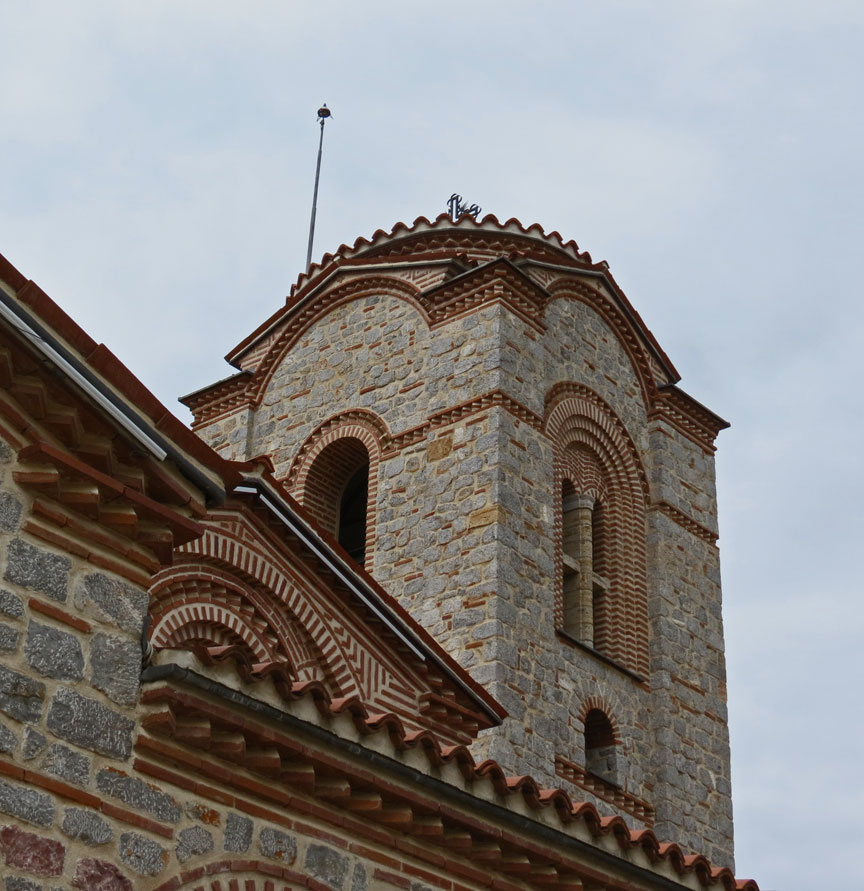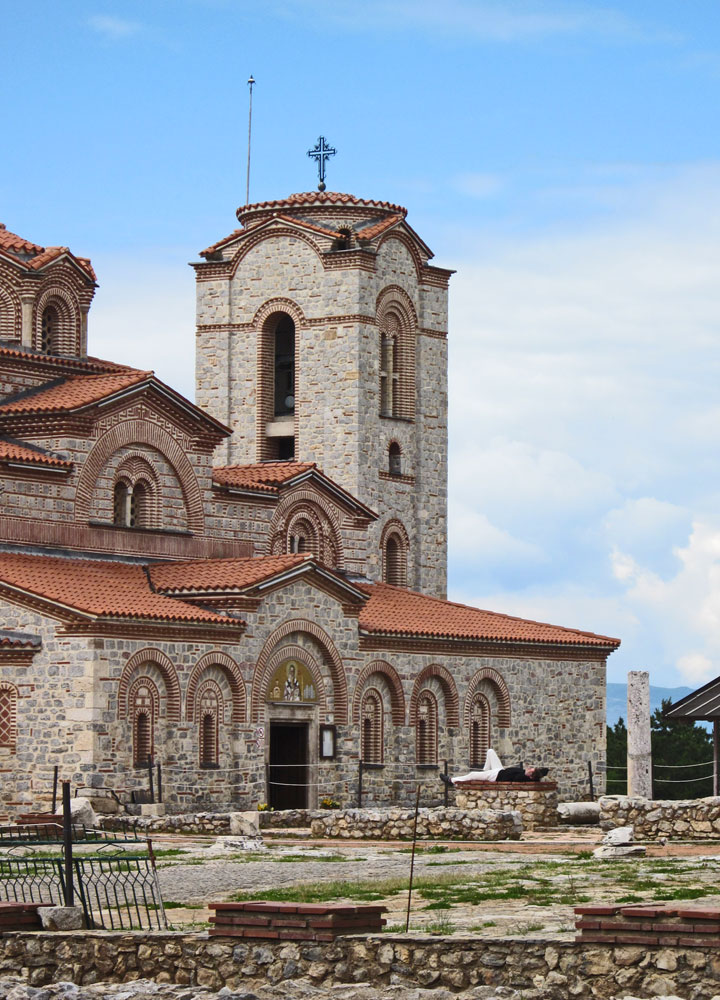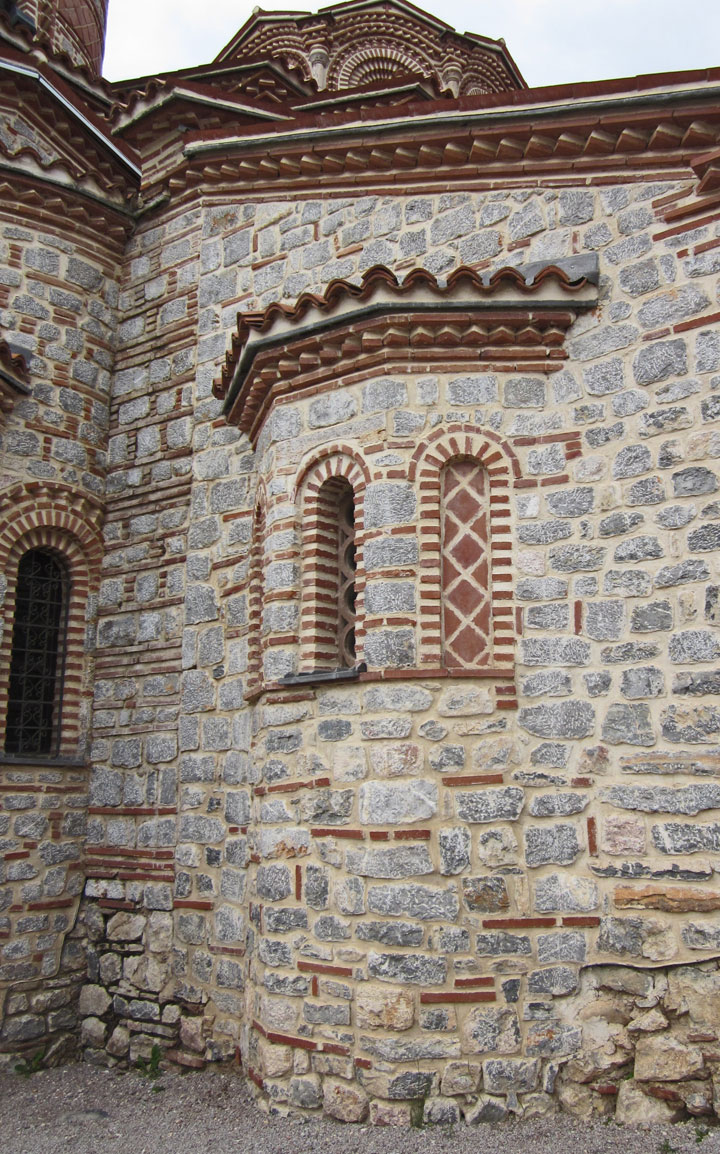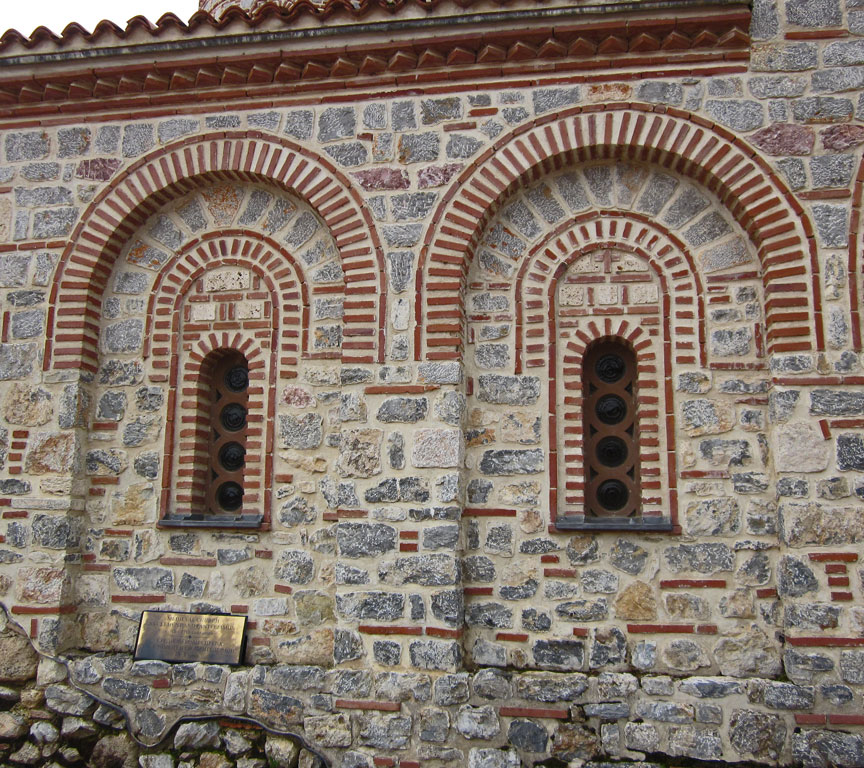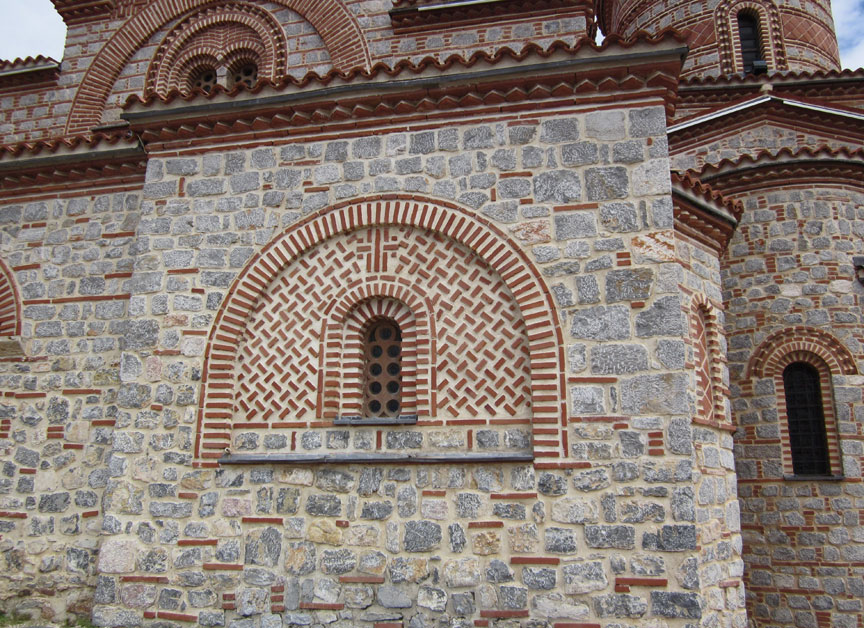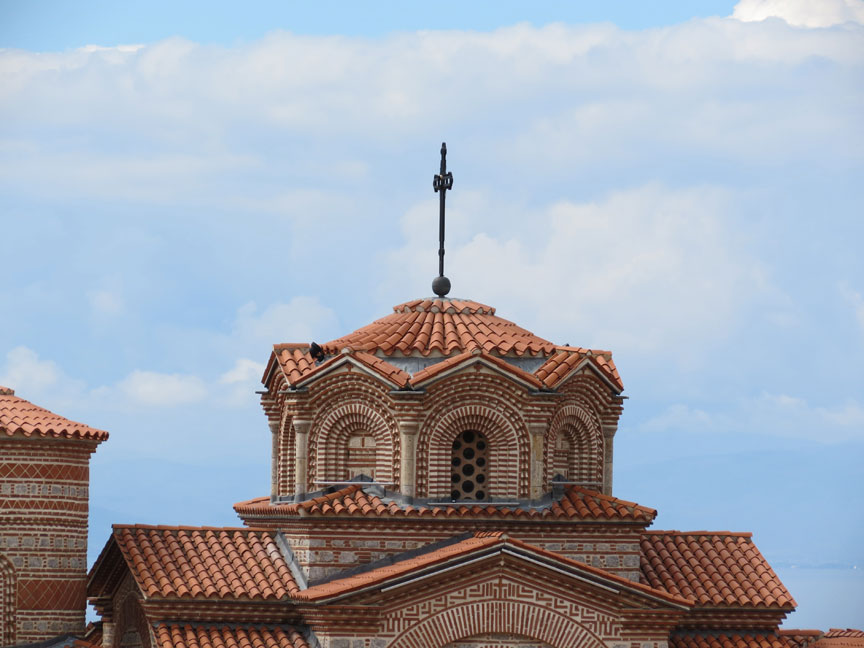

Saint Panteleimon
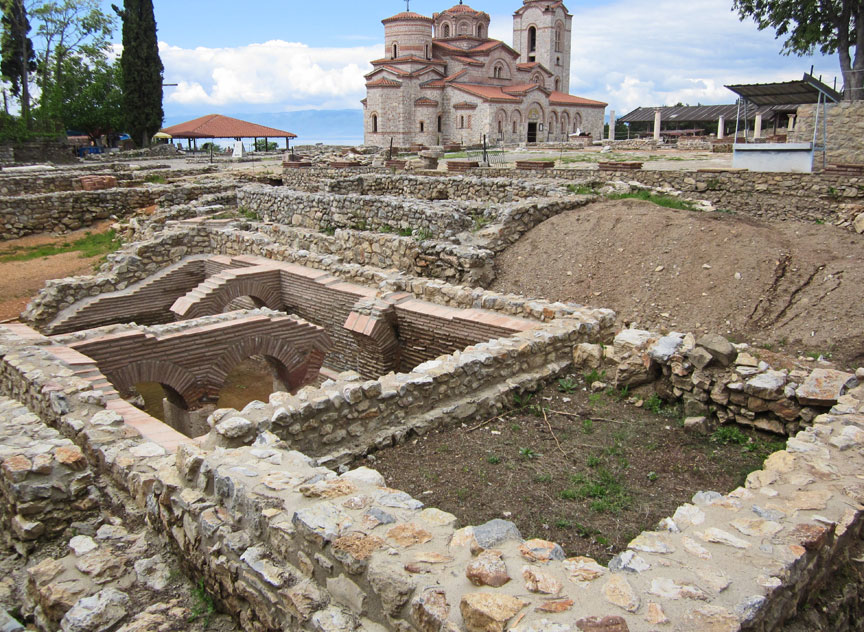
Saint Panteleimon
Saint Panteleimon (Macedonian: Свети Пантелеjмон, Sveti Pantelejmon, (Greek: Άγιος Παντελειμόνας) is a monastery in Ohrid, Republic of Macedonia situated on Plaošnik. It is attributed to Clement of Ohrid, a disciple of Saint Cyril and Saint Methodius. Archaeologists have come to believe that the monastery was the site where the first students of the Glagolitic alphabet (used to translate the Bible into Old Church Slavonic) were taught.

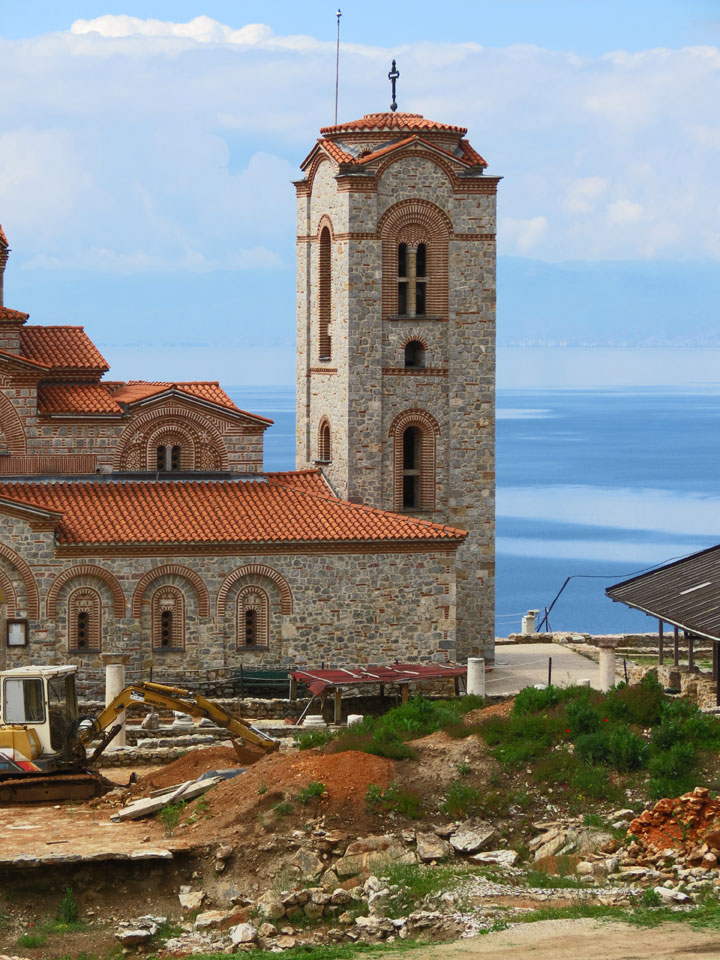
The recently constructed bell tower on the side of the monastery.
An icon above the entrance depicts Saint Clement alongside Saint Panteleimon whilst Christ is overlooking them

entrance to the grounds
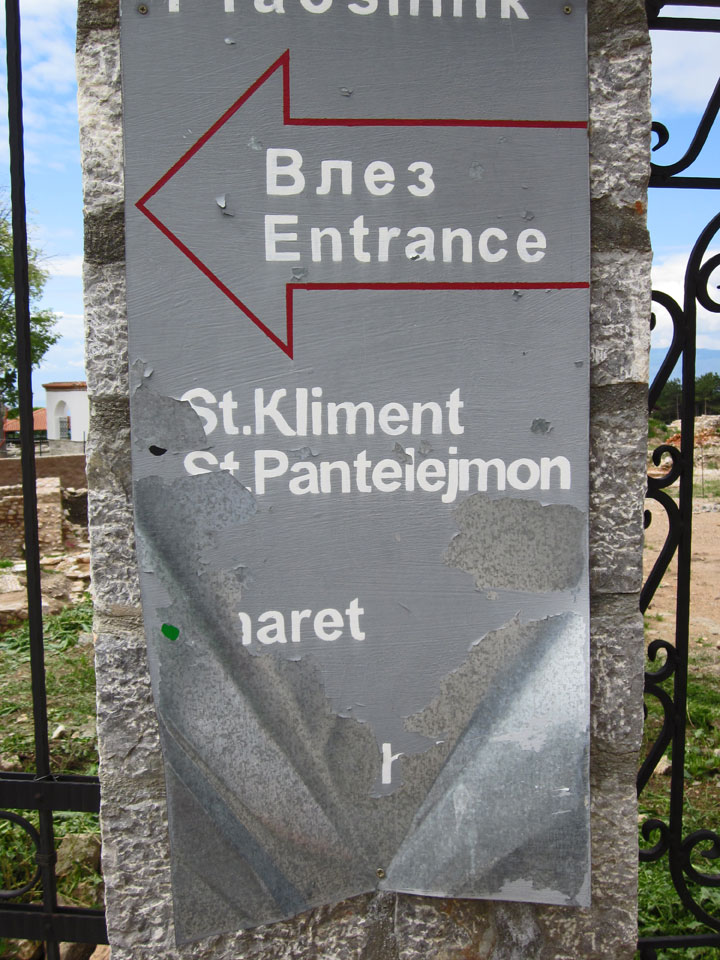
The monastery is believed to have been built when Saint Clement arrived in Ohrid, at the request of Boris I of Bulgaria and restored an old church. Sources say that Saint Clement was not satisfied with the size of the church and therefore built a new one over it and assigned Saint Panteleimon as its patron saint.
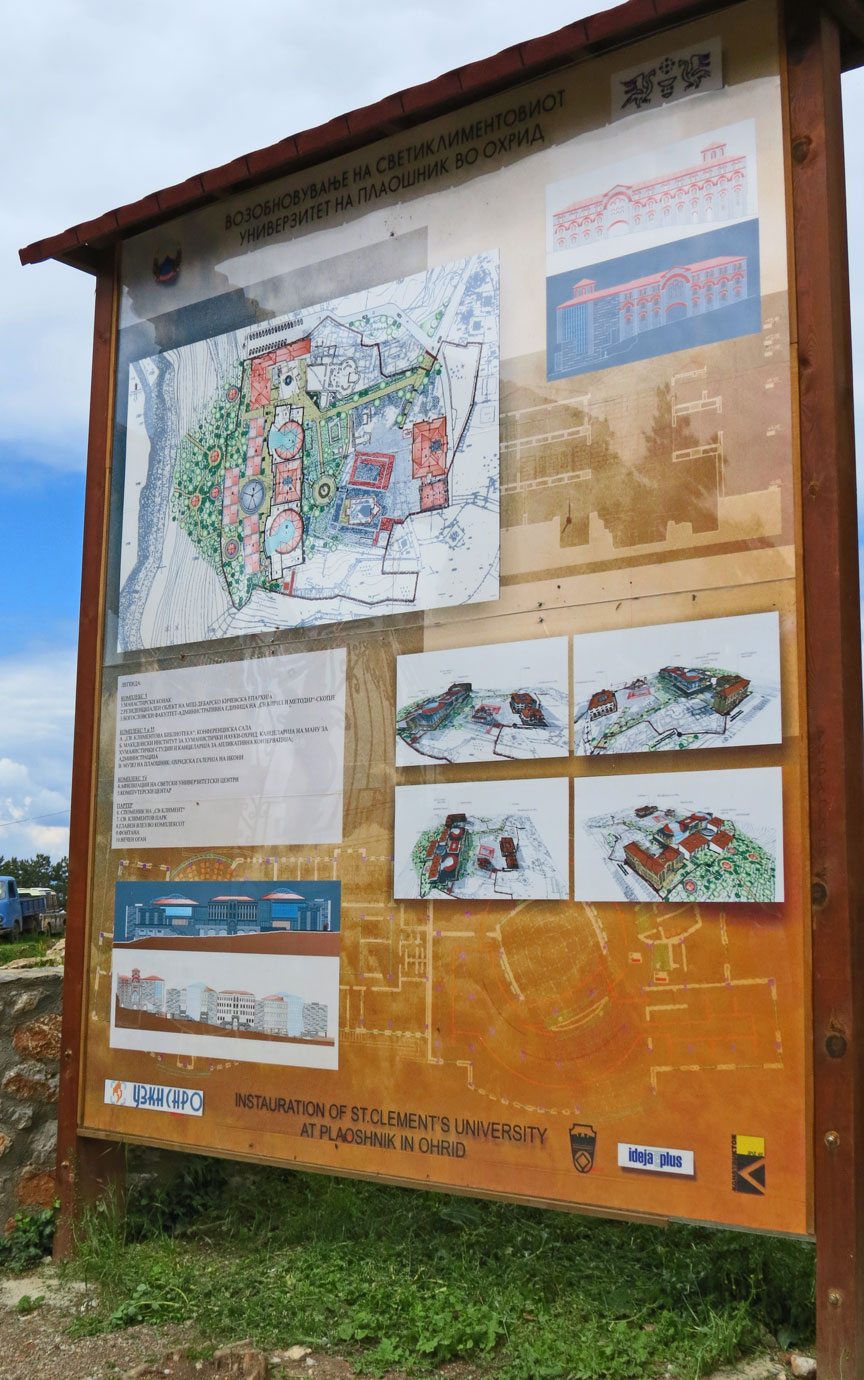
Saint Clement used his newly created monastery as a liturgical building and a
place for teaching his disciples his variation of the Glagolitic alphabet, known
as the Cyrillic script. Clement personally built a crypt inside the monastery in
which he was buried after his death in 916, his tomb still exists today.
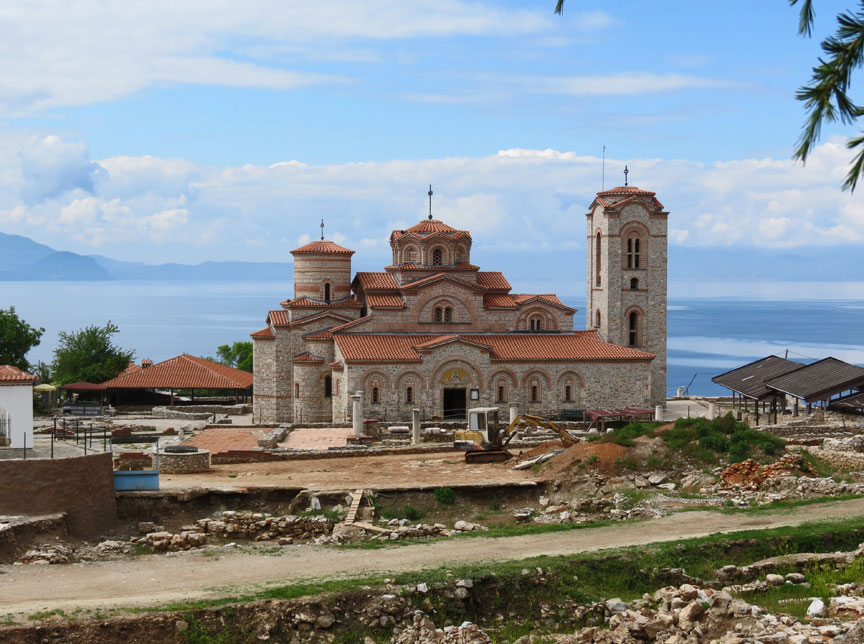
In the 15th century, Ottoman Turks converted the monastery into a mosque but
during the beginning of the 16th century allowed ruined churches and monasteries
to be restored, therefore, so was Saint Clement's monastery. The monastery was
again ruined during the end of the 16th century or the beginning of the 17th
century and yet another mosque, called Imaret Mosque, was erected by the
Ottomans, this mosque still exists to this day.
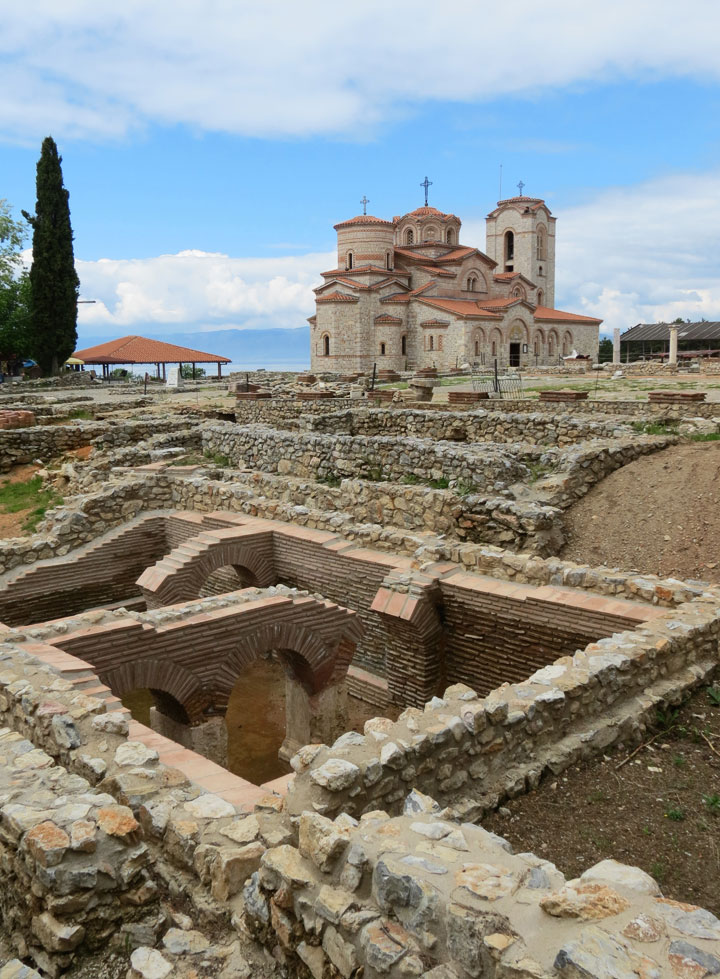
Many archaeologists believe that Clement himself designed and constructed the
monastery. Clement, along with Naum of Preslav would use the monastery as a
basis for teaching the Glagolitic and Cyrillic alphabets to Christianised Slavs
thus making it a university.
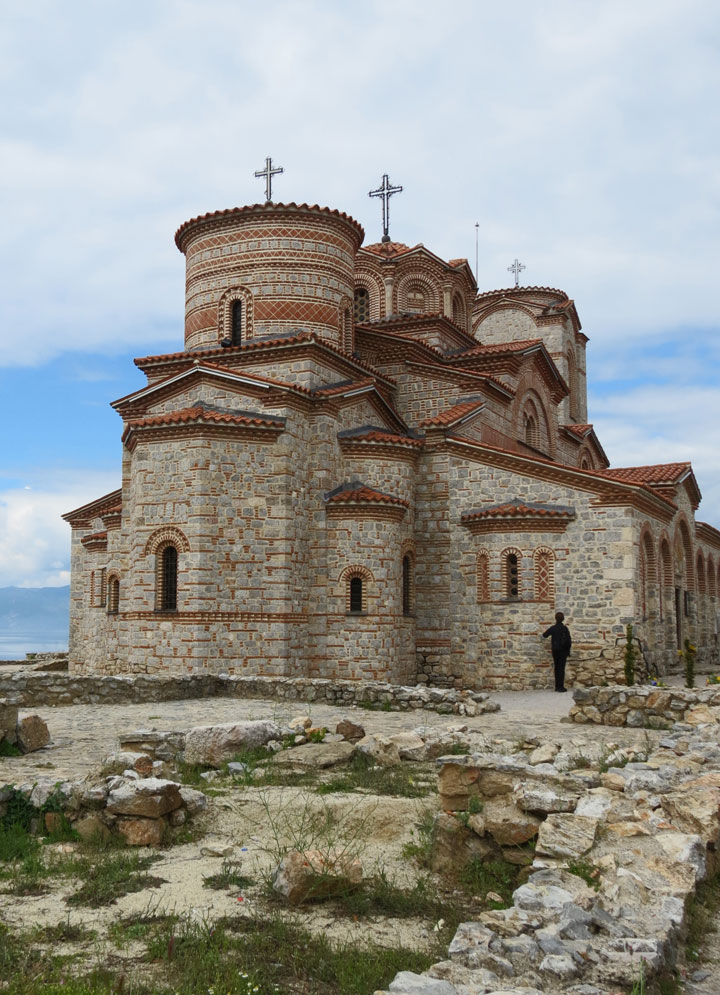
The monastery stands on a hill which is now known as Plaošnik overlooking Lake
Ohrid. Clement built his monastery on a restored church and a Roman basilica of
five parts (the remains of the basilicas can still be seen outside the
monastery). Judging by the architectural style and design of the monastery,
researchers say that Saint Clement intended for his building to be a literary
school for disciples, thus it is believed to be the first and oldest
discontinued university in Europe.
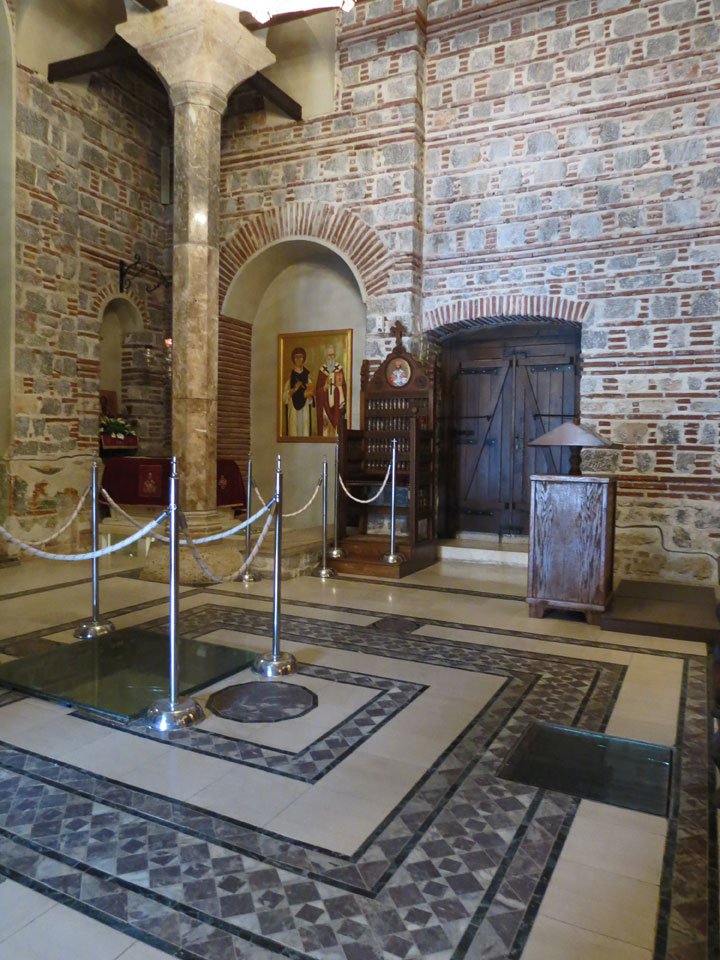
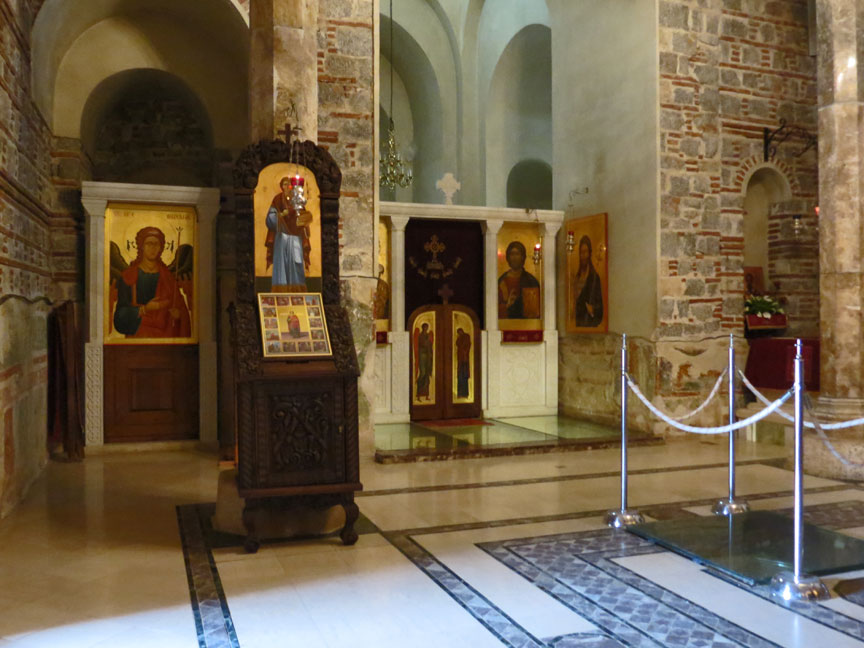
Apart from the monastery's many reconstructions during the Ottoman empire, it
has recently undergone extensive reconstruction and excavation. Reconstruction
started on December 8, 2000 and the physical church was fully reconstructed by
August 10, 2002. Most of Saint Clement's relics were returned to the church. A
partially ruined bell tower was restored on the right side of the monastery and
the floors of the interior of the church have been reconstructed with marble.
Reconstruction was carried out by hand using materials used to build the
original church in order to preserve the original spirituality of the monastery.
Machines were only used to polish the interior during the reconstruction of the
monastery. The first excavations of the monastery were carried out in 1943 by
Prof. Dimche Koco. Excavations inside the monastery have revealed underground
tunnels and crypts. Further excavations have been planned to uncover more
remains under the monastery, including more ruins of the Roman basilicas that
stood there (the pillars outside the monastery support the idea of more
remains).


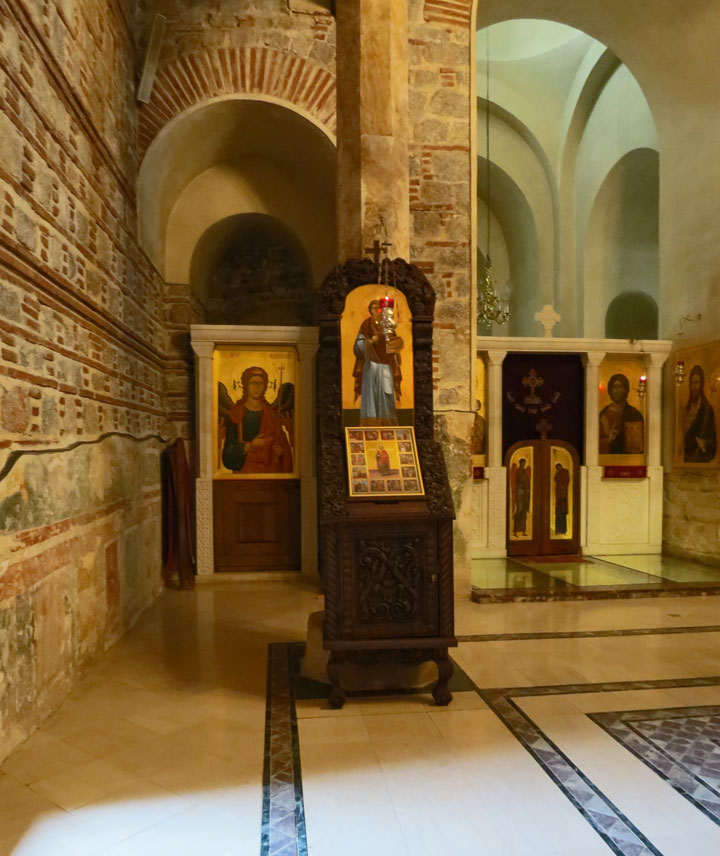
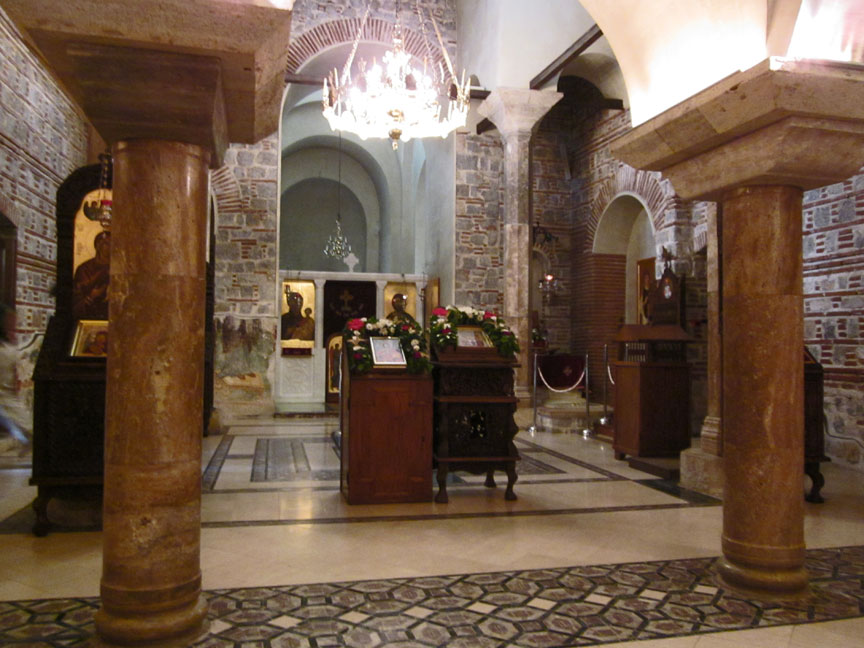
On October 10, 2007, a depot of approximately 2,383 Venetian coins was
discovered by archaeologists while excavating the monastery. A prominent
archaeologist of the Republic of Macedonian, Pasko Kuzman, stated that the coins
are of special significance because they indicate that Ohrid and Venice were
commercially linked.
Text from Wikipedia
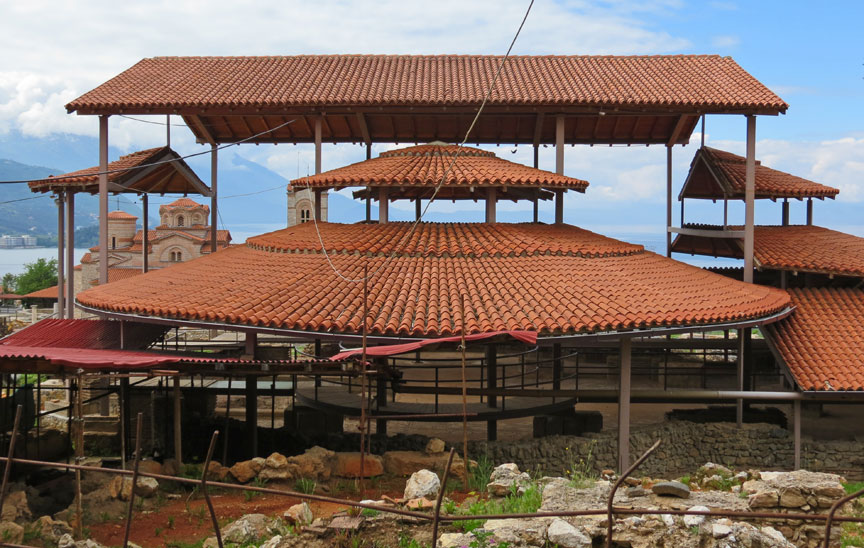
roof over new restoration
